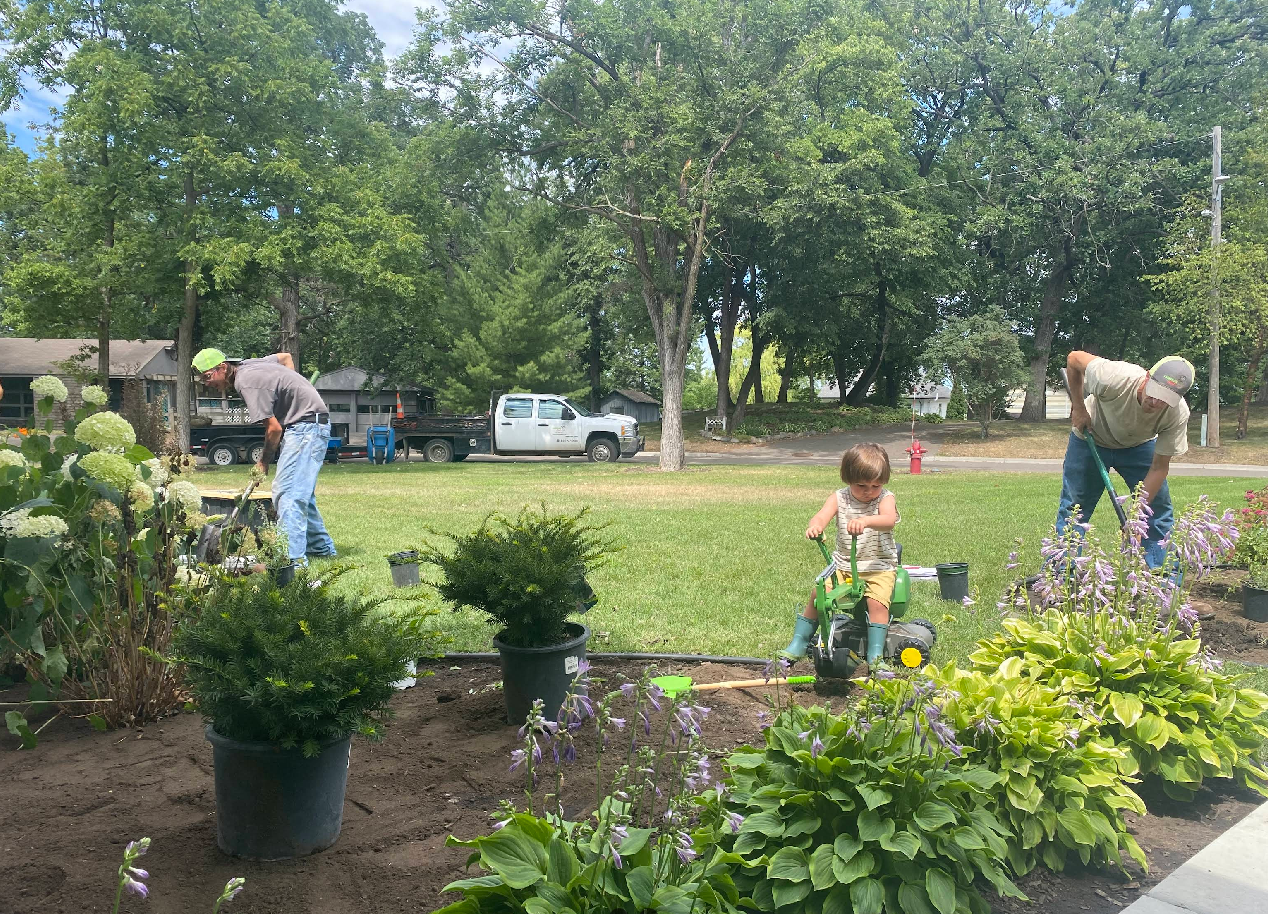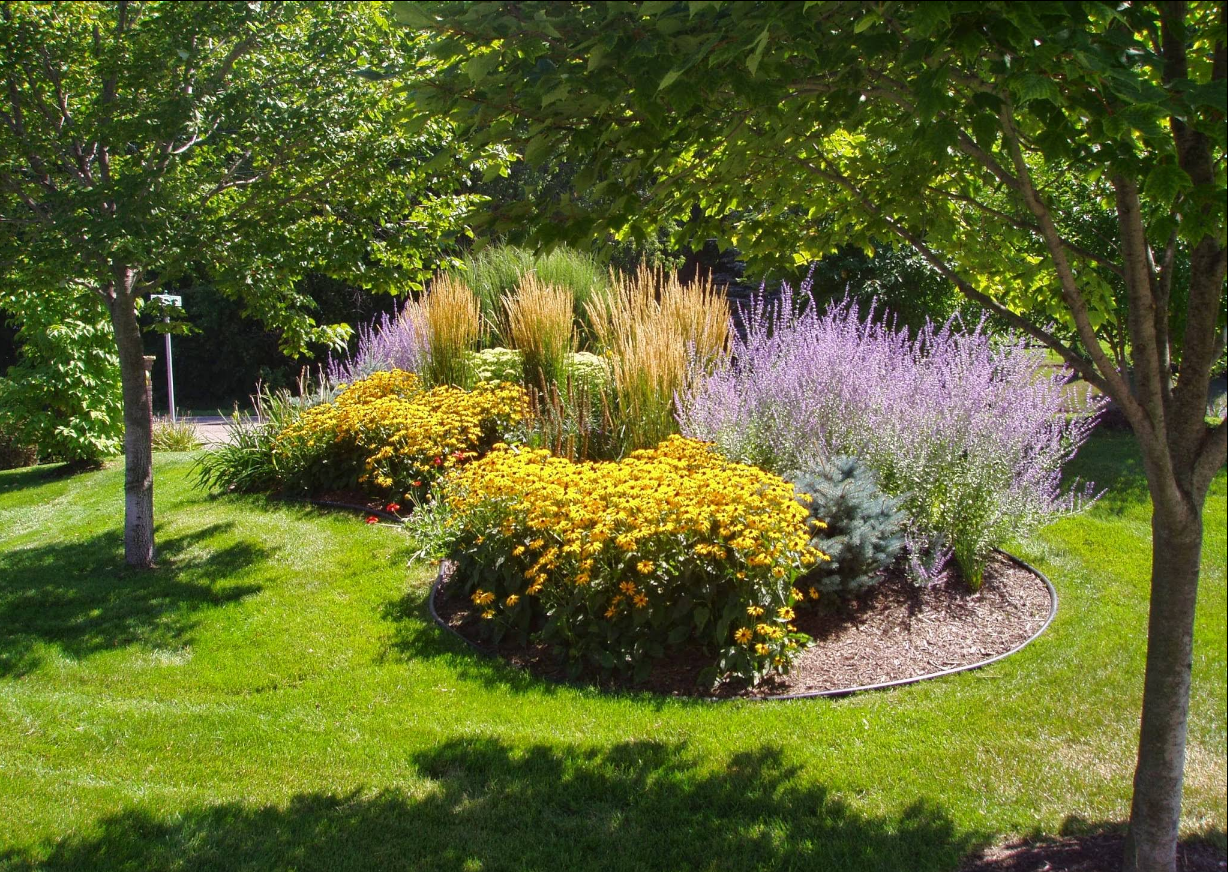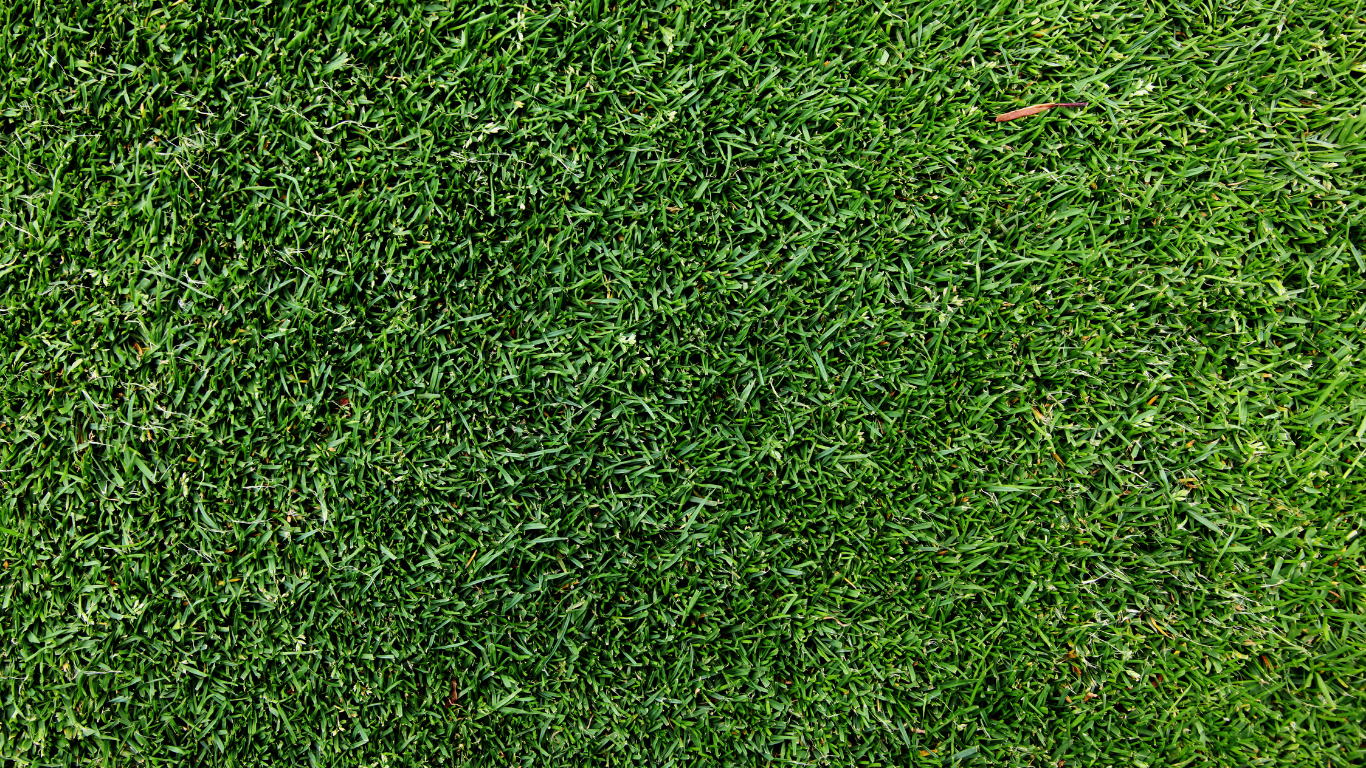Caring for Your Newly Sodded Lawn in Northfield MN
Support Your New Sod for Long-Term Success
Installing sod is the fastest way to achieve a lush, green lawn — but it’s not maintenance-free. The success of your sodded lawn depends on what happens in the first 30 days after installation. If you follow the right care routine, your sod will root quickly and grow into a strong, healthy turf. Skip a step, and you risk dry patches, disease, or failure to root.
At Landscape Gal, we help homeowners across Northfield, Rice County, and the southern Twin Cities metro protect their investment with simple, proven lawn care steps. This guide will walk you through watering, mowing, traffic management, and troubleshooting — so your new lawn stays green and growing.
What to Expect After Sod Installation
Sod is essentially a mature lawn that has been harvested, rolled, and installed. While it looks instantly finished, it’s actually vulnerable in the early days and needs time to connect with the soil beneath.
Sod Timeline
- Days 1–14: Sod is unrooted and dries out quickly.
- Days 15–30: Roots begin to penetrate soil. Lawn becomes walkable.
- Day 31+: Lawn enters standard care routine. Strong roots should be established.
Watering Your New Sod
This is the most critical step in the success of your sodded lawn. Sod requires frequent watering at first, and then consistent deep watering as roots develop.
Days 1–7: Frequent Shallow Watering
- Water
2–3 times per day to keep sod and soil underneath consistently moist
- Avoid over-saturating — if you see standing water, reduce frequency
- Corners, edges, and sunny areas may dry faster — monitor closely
Days 8–14: Transition to Once Daily
- Begin reducing frequency and increasing duration
- Water deeply once per day to promote root growth
- Continue monitoring for dry patches or shrinkage between seams
Days 15–30: Deep Watering Every Other Day
- Water every 2–3 days, depending on rainfall and temperature
- Goal is to deliver
1 inch of water per week, including precipitation
- Deep watering trains roots to grow downward
Mowing Your Sodded Lawn
Mowing must wait until your sod has rooted. Cutting too early can damage new roots and shift the sod.
When to Mow
- Wait until the grass reaches
3.5 to 4 inches in height
- Confirm the sod is firmly rooted by gently lifting a corner
- Use a sharp mower blade and set to cut no more than
1/3 of grass height
- Mow when the lawn is dry — never when wet or muddy
Ongoing Mowing Tips
- Keep blades high for the first few mows to reduce stress
- Leave clippings on the lawn to return nutrients
- Avoid tight turns or spinning tires during first few weeks
Traffic and Use Guidelines
Sod looks ready the day it's installed — but it’s not. Avoid heavy use during the rooting period.
Traffic Restrictions
- No walking, playing, or mowing for the first
7–10 days
- Light foot traffic is okay around edges only when watering
- After 2–3 weeks, normal use can gradually resume
Protecting High-Risk Areas
- Use barriers or cones to deter kids and pets
- Water high-traffic zones slightly more often
- Monitor corners and seams — these areas dry and shift more easily
Fertilizing Your New Sod
Fertilization supports deep green color and strong root development — but only when applied at the right time.
First Application
- Apply a
starter fertilizer 3–4 weeks after installation
- Use a slow-release product with balanced nitrogen
- Water immediately after application to avoid leaf burn
Ongoing Fertilizer Schedule
- Follow up with a second application
6–8 weeks after install
- Avoid fertilizing in extreme heat
- Fall fertilization builds strong roots for winter survival
Common Sod Problems and Fixes
Even with great care, sod can experience minor issues in the first month. Here’s what to look for:
- Edges lifting or shrinking: Not enough water or too much foot traffic
- Yellowing grass:
May indicate overwatering or poor drainage
- Footprints remain: Soil is too soft — avoid walking until firmer
- Dry seams or patchy color: Increase watering and check sprinkler coverage
- Mushrooms or algae: Reduce water and increase air circulation
If issues persist, contact Landscape Gal for evaluation and help with corrections.
Long-Term Sod Success Starts with Smart Care
When installed properly and cared for during the first 30 days, sod provides a fast, durable, and beautiful lawn solution. But speed doesn’t mean shortcuts. Your new lawn is an investment that needs consistent moisture, limited traffic, and a gradual transition into standard care.
At Landscape Gal, we don’t just lay sod — we educate clients so their landscapes thrive. These care steps are based on proven practices for Minnesota’s soil and climate.
Stick to this plan, and your new lawn will reward you with healthy roots, even growth, and long-term resilience.
Contact Landscape Gal
Have questions about your new sod? Want us to walk your site and check rooting?
We’re here to help.
3343 Union Lake Trl, Northfield, MN 55057
Monday–Friday, 7:30am – 5:30pm



